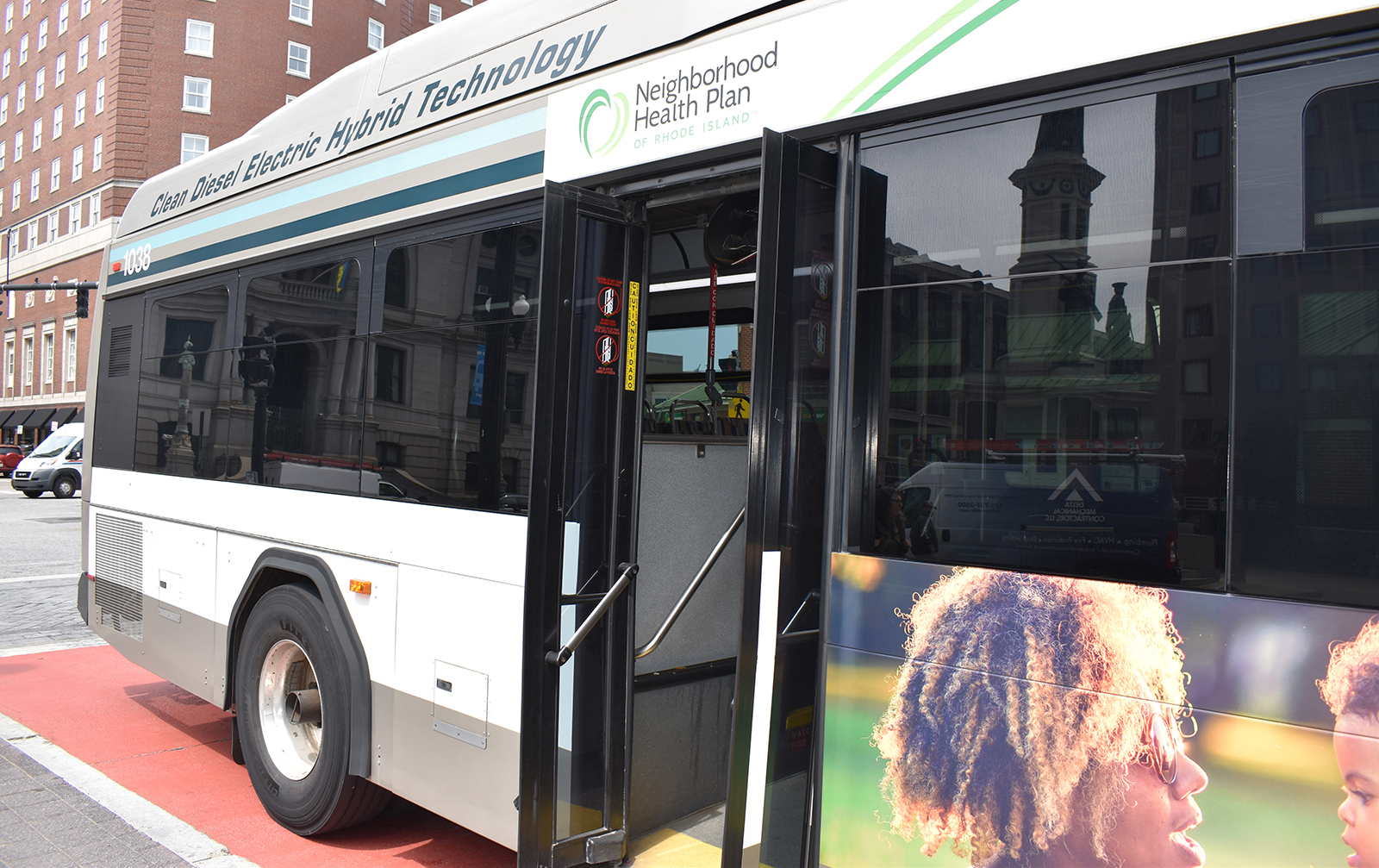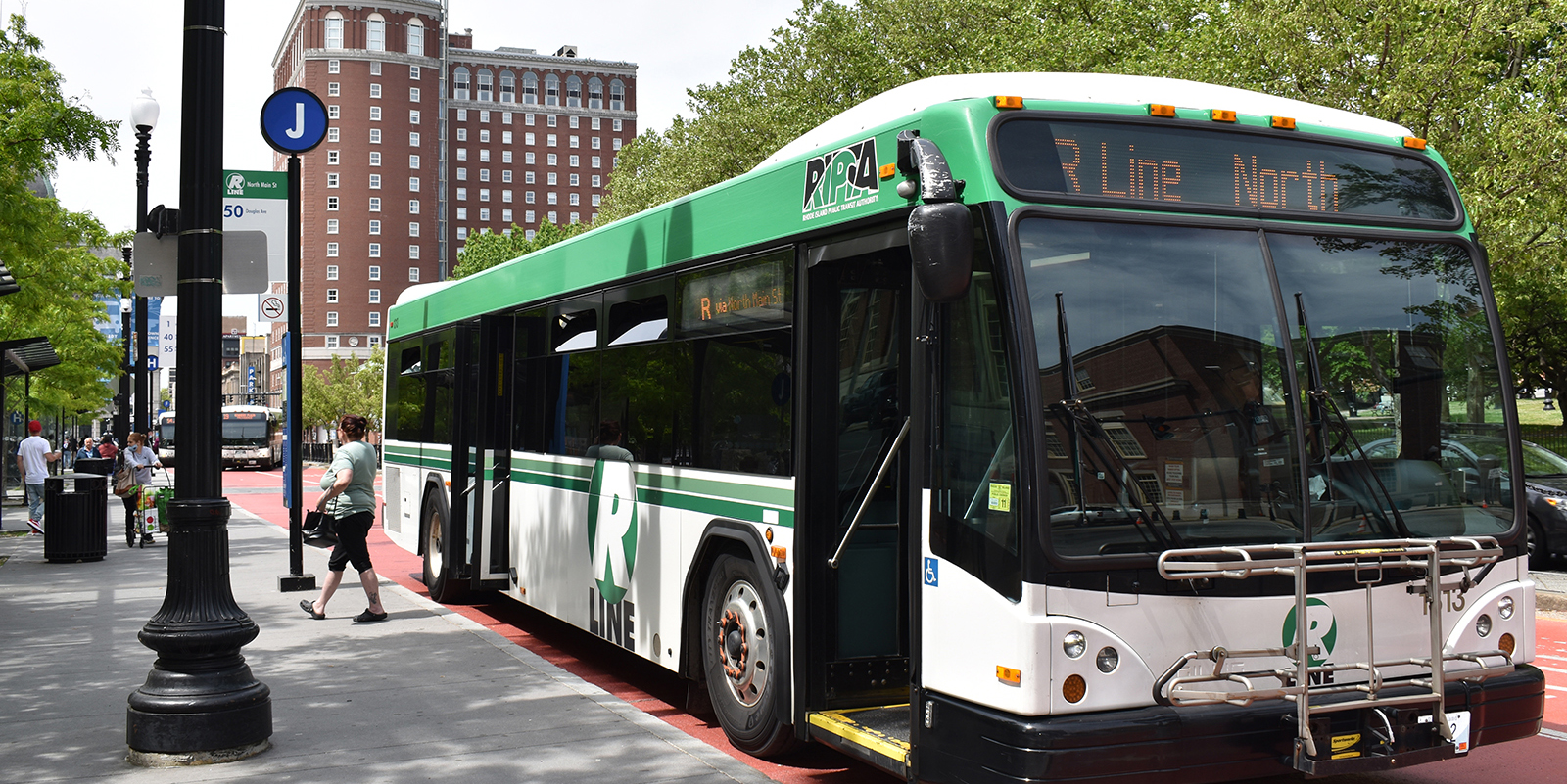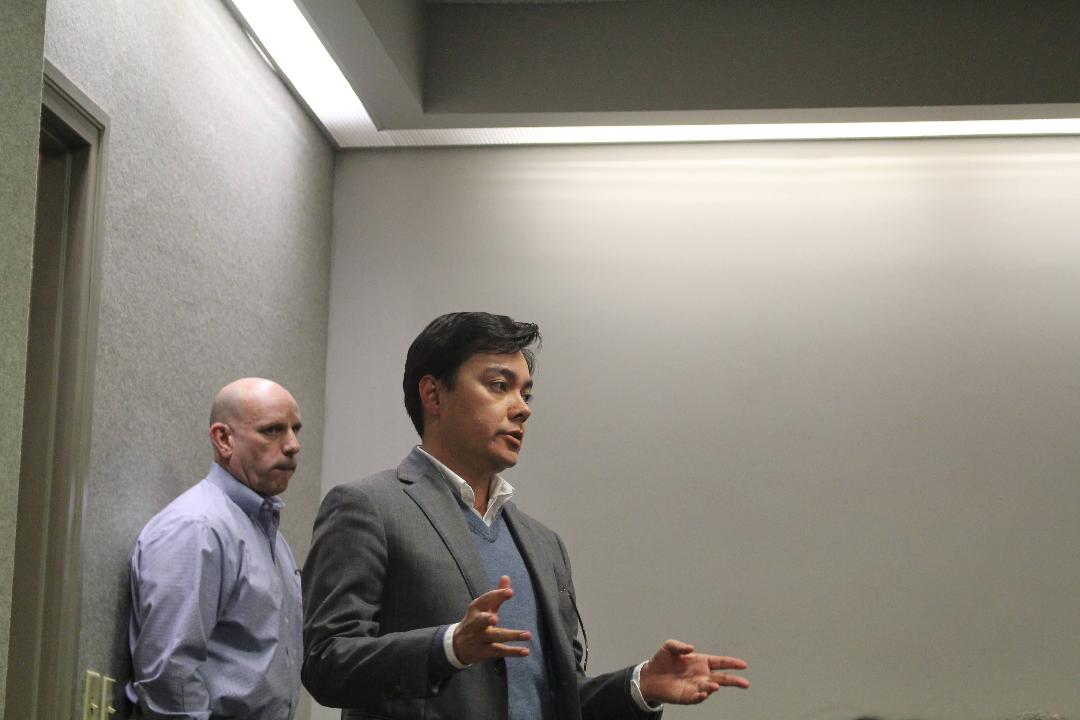Rhode Island Transit Conference Focuses on Improvements
December 8, 2015
PROVIDENCE — Local and national experts recently convened at the Rhode Island Convention Center to discuss improving the state’s underused and underappreciated transit system.
Despite eight in 10 Rhode Islanders living within a 10-minute walk of a transit stop, less than 3 percent use the bus or train as their primary means of transportation. The national average is 5 percent, while New Jersey — the only state more urbanized than Rhode Island — averages 11 percent, according to the Coalition for Transportation Choices (CTC), the group that organized the Dec. 1 event.
The weekday-morning forum entitled “Next Stop: Making Transit Work for Rhode Island” attracted nearly 200 people. Representatives from the Denver, Minneapolis-Saint Paul and Hartford metro areas provided presentations about their regions’ transit successes. Two question-and-answer sessions followed: one featuring the presenters; the other featuring Rhode Island officials from the Statehouse, the Division of Planning, the Rhode Island Public Transit Authority (RIPTA), the Department of Transportation and the Providence Department of Planning.
Concepts and possible solutions discussed at the forum will help develop a 10-year investment proposal to be submitted by RIPTA in early 2016 as part of the state’s long-range Transportation Improvement Plan.
Gov. Gina Raimondo, House Speaker Nicholas Mattiello and Senate President Teresa Paiva Weed offered opening remarks focused on the economic benefits strong transit systems create.
The case for better transit
Presenters and panelists highlighted a variety of benefits associated with a strong transit system.
Good transit enables a city, state or region to compete for talented workers, according to Will Schroeer, executive director of East Metro Strong, a public-private partnership in the Minneapolis-Saint Paul region. Millennials prefer living in cities and suburbs that prioritizes walking, biking and transit, he said. As a result, companies are opening in or relocating to those places.
“Transit is fundamentally an economic development service, not a social service,” Schroeer said.
Susan Wood is a planning project manager for the FasTracks Environmental Resource Group of the Regional Transportation District in Greater Denver. Charles Schwab, a Fortune 500 company, contacted her team two years ago to enquire whether a train line would be extended to an area the company was considering for a new office. The information was a factor in the company’s decision about whether to locate there, she said.
Transit investment offers a positive return on investment — a fact that practically every speaker at the conference referenced. Wood said the FasTracks project in Denver has injected $4 into the local economy for every $1 of investment.
Home values near high-frequency transit service perform 42 percent better than home values with infrequent transit service, according to CTC.
Transit also keeps money in its rider pockets, especially if it enables them to shed a household car, said Michael Sanders, administrator of the office of Transit and Ridesharing for the Connecticut Department of Transportation. The annual costs associated with owning a sedan in 2014 was about $9,000, according to AAA.
Rep. Teresa Tanzi, D-Wakefield, said quality transit allows people to age in place by providing them with access to community services without a personal vehicle. Rhode Island, among all states, has the highest proportion of seniors age 85 and older, most of whom can no longer drive, she said.
Transit reduces congestion and lessens the need for highway expansion and maintenance.
High upfront costs
Despite the short- and long-term benefits of improving transit, projects often come with a hefty upfront cost and are therefore unpopular among taxpayers and their representatives.
Magnifying this issue is the fact that public transit rarely pays for itself, according to Sanders of ConnDOT. Instead, transit is generally subsidized by the government, with the return on investment indirectly going to businesses and home values.
Scott Wolf, executive director of Grow Smart Rhode Island and the forum’s moderator, said all transportation is subsidized, but only transit is singled out as a wasteful investment. RIPTA collects about 25 percent of its revenue from fares, which is comparable to that of other bus systems, he said.
To keep up with increasing operational costs and the decreasing value of the gas tax that helps fund RIPTA, the agency has raised fares three times in the past 10 years. The Band-Aid fixes to RIPTA’s budget, passed almost annually by the General Assembly, haven’t sufficiently kept pace with the cost of service, Wolf said.
RIPTA’s lack of funding has prevented it from increasing service frequency and extending its service hours, despite both of these improvements being called for in RITPA’s five-year plan, according to Wolf.
According to Peter Garino, deputy director of RIDOT, increasing Rhode Island’s transit mode-share in a meaningful way will require significantly more investment in the system. New Jersey — at 11 percent transit mode-share — currently invests twice the national average in its transit system. Rhode Island — at 2.7 percent — invests just 60 percent of the national average.
Kevin Flynn, associate director of the Division of Planning, said Rhode Island can’t squeeze much more money out of the state sales or gas taxes. Both, he said, are relatively high, and with so many Rhode Islanders living near the Massachusetts border, raising either could drive business out of the state.
“We need to tie projects to a reasonable source of funding,” he said.
With state legislators seemingly unwilling or unable to fully fund Rhode Island’s transit system, public-private partnerships were mentioned repeatedly by presenters and panelists as the way forward.
Tanzi said transit proposals need to be framed in ways that the business community views them as recruitment tools that will give them an edge over competitors.
Wood and Schroeer emphasized the importance of providing the business community with specific proposals that clearly explain the projected return on investment.
Other hurdles to a better transit system faced by Rhode Island include the state’s disperse employment centers, a lack of significant traffic, which, in cities such as Washington, D.C., or New York, disincentives driving, and an ample supply of free or inexpensive parking for drivers, according to Flynn.
Accomplishments and opportunities
The R-Line, RIPTA’s recently launched 7.5-mile rapid bus line that connects Cranston to Pawtucket via Providence, was celebrated as a major success by the agency at the forum. R-Line buses arrive every 10 minutes and improved running time 17 percent over the the service it replaced. The improved efficiency allowed RITPA to take two buses off the route and redeploy them in another area of need.
The R-Line was implemented with only $4 million — “a relatively small investment compared to other Bus-Rapid-Transit,” said Amy Petine, RIPTA’s executive director of planning.
Petine described RIPTA’s inaugural five-year plan as an effective planning tool that also improved the agency’s ability to advocate for more investment. As the plan’s window draws to a close, results are mixed. Many items such as the R-Line and renovation to Kennedy Plaza were achieved, but improvements to bus frequency and expanded service hours still haven’t been implemented.
Panelists discussed both minor and major opportunities to improve Rhode Island’s transit system. Expanding signal prioritization, which allows a bus to keep a traffic light green until it reaches the intersection, to more routes would improve efficiency, according to Petine. She said the agency will consider whether to allow buses to travel in shoulder lanes as a way to efficiently move through congested areas.
Petine said riders will soon be able to track bus locations in real time on their smart phones, providing them with up-to-date information. Improvements to the first and last miles of people’s commutes are also important. Bus stops, Petine and others at the forum said, are only useful if people can access them via safe pedestrian and bicycle infrastructure.
Larger-scale opportunities discussed included the I-195 land in Providence, which RIDOT’s Garino said should be developed in a transit friendly way, and the reconstruction of the 6-10 corridor from the I-95 interchange to Olneyville.
“When we talk about the 6-10 investment, it is on the scale of the investment of relocating I-195. We need to think of it in a similar way,” said Bonnie Nickerson, of Providence’s planning department, noting that the $500 million reconstruction project is a prime economic development opportunity.
A bus-rapid-transit lane seems likely to be included during the reconstruction of the 6-10 corridor due to the fact that RIDOT can attract more federal funding for the project by including this feature, according to Garino. A more imaginative idea has also been gaining traction which would transform the 6-10 corridor from a car-centric highway to a boulevard that includes bus-rapid-transit, bike and pedestrian facilities, and fewer car lanes.
Such a plan would increase developable real estate neighboring the park-like corridor and reconnect neighborhoods currently isolated from each other by the highway, according to Moving Together PVD, an advocacy group pushing the boulevard idea. It would also decrease highway maintenance costs by reducing the number of bridges crossing the corridor, according to the group. Instead, the boulevard would be crossable at normal intersections.
Asked directly by James Kennedy, one of the advocates involved with Moving Together PVD, whether RIDOT would commit to considering the boulevard idea, Garino said, “Quick answer: yes.”
“My advice is to think big,” Garino said. “We want a solution to the problem that’s the same size as the problem. We’re not going to get (to where we want to be) incrementally.”




Make sure to contact your state rep., state senator, or city council person (if in Providence or Cranston) to ask them to support the 6/10 boulevard. MovingTogetherPVD.com
When Providence gives us back the Scituate Reservoir, I’ll give up the 6/10. Returning the reservoir land to it’s rightful owners would also create developable real estate and reconnect neighborhoods. It would allow more people to return to farming, so they don’t have to drive to a job in Providence every day.
Terrible percentage in a state with the worst drivers ever!